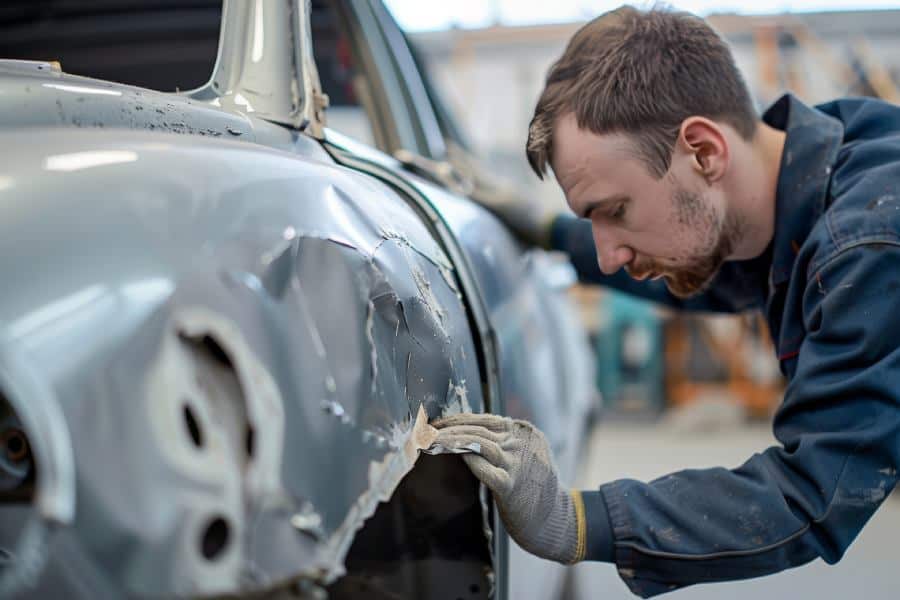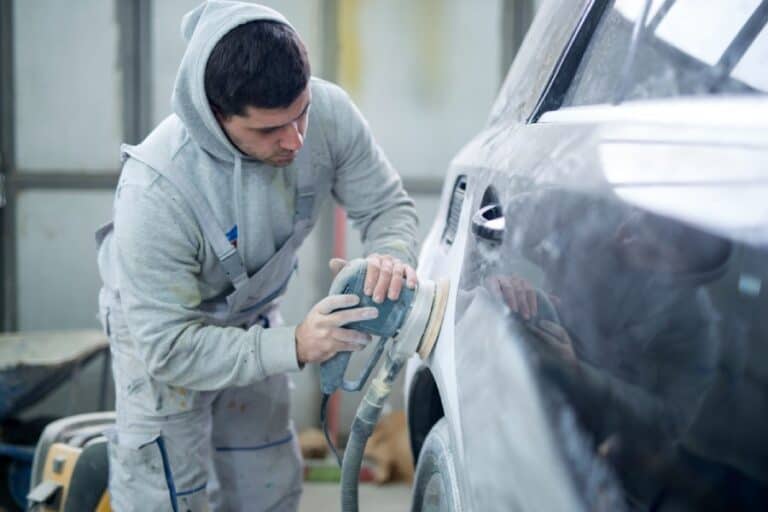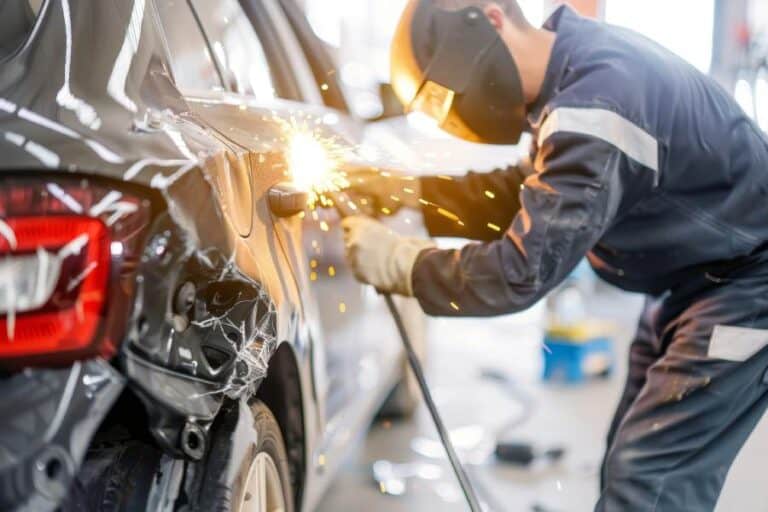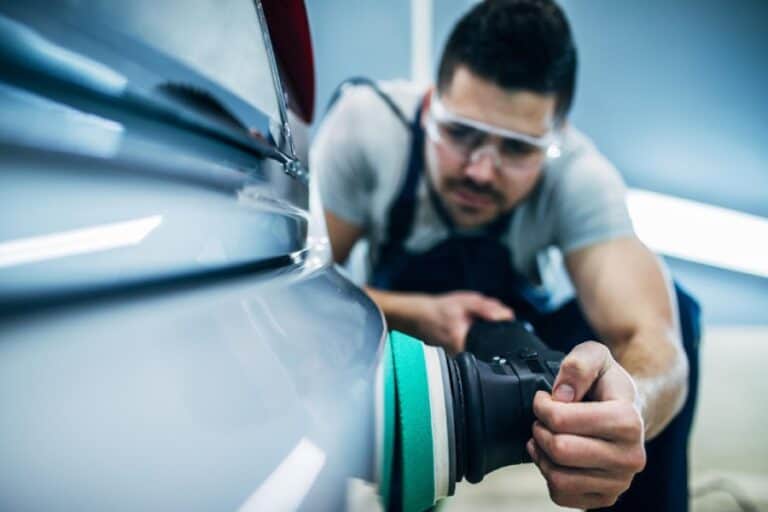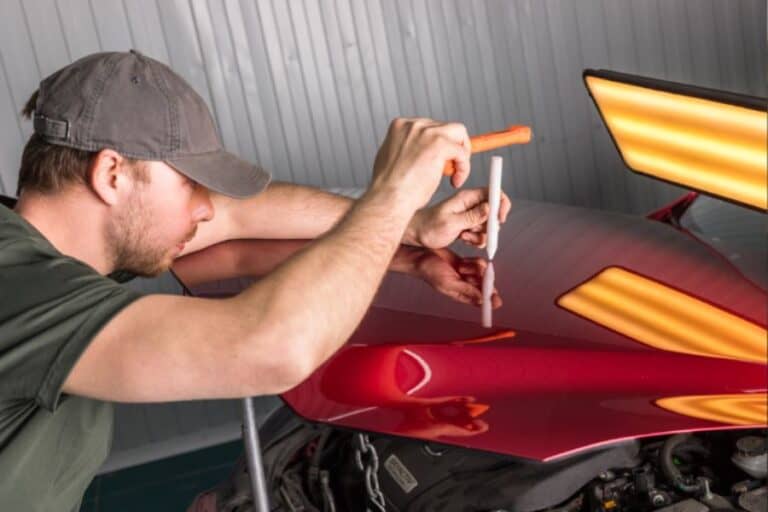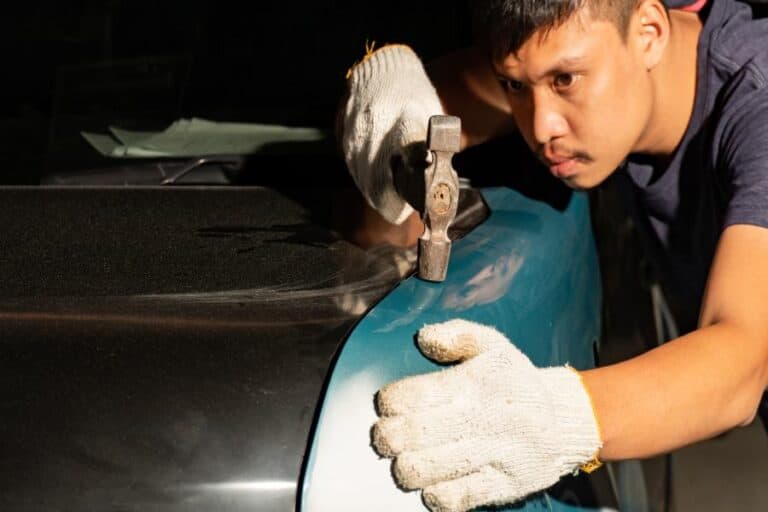The Auto Hail Repair Process: What To Expect And How To Prepare Your Vehicle
Hailstorms can occur unexpectedly, causing significant destruction, particularly to cars that are unprotected. For those who own vehicles, coping with the aftermath of hail damage can be quite overwhelming. This includes evaluating the extent of the damage, managing insurance processes, and ultimately arranging for repairs.
Grasping the auto hail repair procedure and learning how to get your vehicle ready can ease the experience and reduce stress. In this article, we will walk you through the stages of auto hail repair, outline what to anticipate throughout the process, and provide tips on preparing your vehicle for effective restoration.
Understanding Hail Damage
Hail can vary in size, from tiny pebbles to sizable golf balls, and the extent of damage it inflicts on a vehicle depends greatly on factors such as its size, density, and how long the storm lasts. The effects of hail can lead to various types of damage, including:
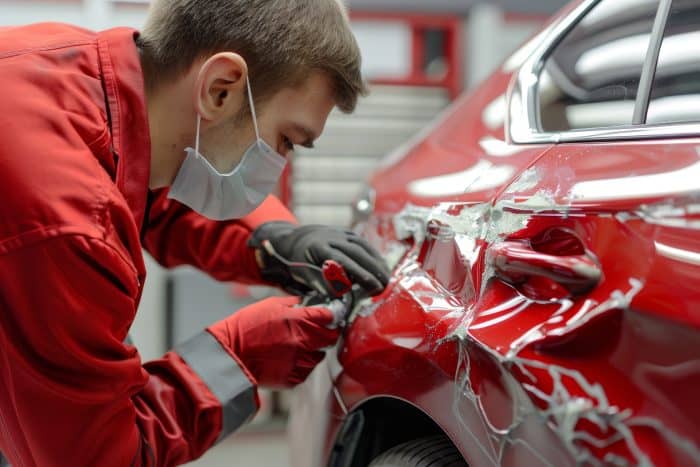
- Dents: The typical type of damage caused by hail primarily impacts the hood, roof, trunk, and side panels of a vehicle.
- Cracked or Shattered Glass: Large hailstones have the potential to break or entirely destroy windows and windshields.
- Scratches and Paint Chips: Hail can damage the paint surface, resulting in chips that expose the underlying metal. If this issue is not remedied, it could cause rust to develop.
The extent of the damage will dictate the necessary repairs and the total expenses involved.
Assessing the Damage
Self-Inspection:
Following a hailstorm, it’s important to examine your car for any obvious damage. Check for indentations, scratches, and any breaks in the windows. Pay attention to spots that appear to be more significantly affected than the rest.
Professional Inspection:
Regardless of how insignificant the damage may appear, it’s advisable to have a professional evaluate your vehicle. They are capable of identifying minor dents and assessing the full extent of any damage that might not be apparent to someone without specialized knowledge.
Insurance Appraisal:
After evaluating the extent of the damage, your insurance provider usually dispatches an adjuster to evaluate it further. This evaluation will assist in deciding if the vehicle can be repaired or if it is classified as a total loss.
Filing an Insurance Claim
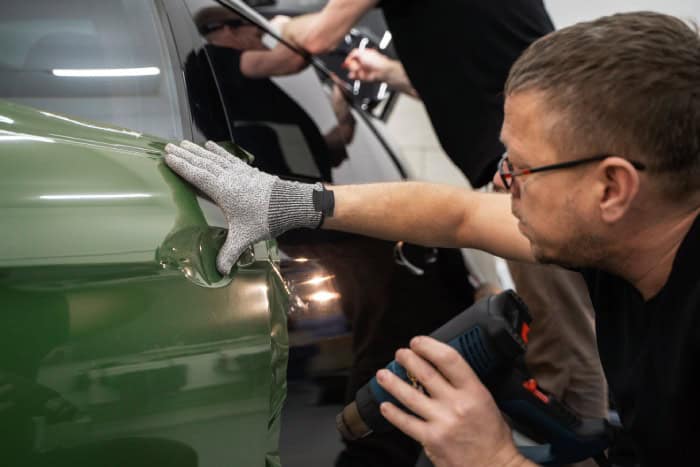
Submitting an insurance claim is a crucial part of the process for repairing hail damage to your vehicle. Here’s a guide to help you through it:
- Contact Your Insurance Company: Contact your insurance provider promptly following the hailstorm. Ensure you give them all relevant information regarding the damages incurred.
- Understand Your Coverage: Examine your insurance policy to grasp the specifics of what your comprehensive coverage includes. While many comprehensive plans typically protect against hail damage, it’s important to verify both your deductible and the maximum coverage amounts.
- Document the Damage: Capture images and recordings of the affected areas to share with your insurance provider. This evidence will be useful in case of any disagreements or if further damage is discovered later on.
- Review the Estimate: Once the adjuster has completed their inspection, you’ll get an estimate for the necessary repairs. Take the time to examine it thoroughly, and don’t hesitate to seek clarification if you notice any inconsistencies or think that some damage may have been missed.
Choosing a Repair Shop
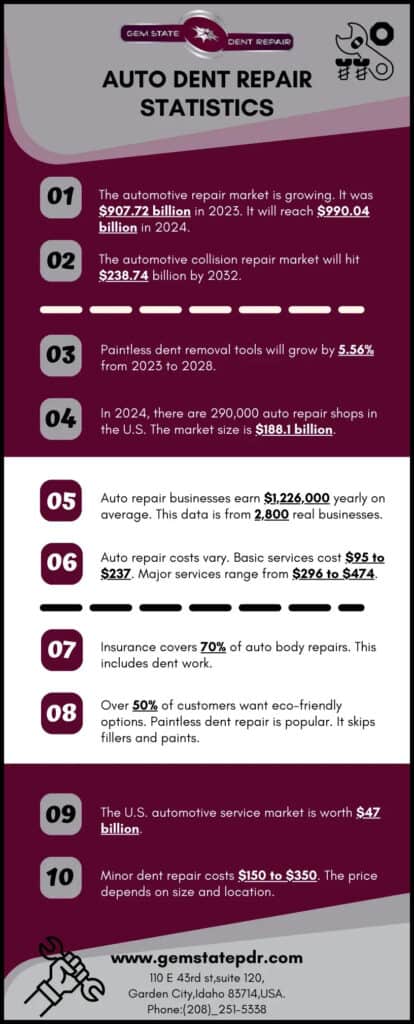
Choosing the appropriate repair shop is essential for bringing your vehicle back to its original state before the damage occurred. Here are several aspects to take into account:
- Reputation: Seek out a repair shop known for its high-quality services. Explore customer feedback, request suggestions from others, and verify whether they have expertise in repairing hail damage.
- Certifications and Experience: Select a repair facility staffed by qualified technicians skilled in fixing hail damage. Look for certifications from reputable bodies such as the National Institute for Automotive Service Excellence (ASE), as these can serve as a reliable sign of their proficiency.
- Warranty: A trustworthy repair facility ought to provide a guarantee for their services. This assurance ensures that if any problems occur post-repair, they will be resolved without incurring extra charges.
- Paintless Dent Repair (PDR) Expertise: When dealing with minor to moderate hail damage, Paintless Dent Repair (PDR) is typically the favored approach. It’s important to confirm that the repair shop employs technicians who are proficient in PDR, since this method maintains the original paint and is less disruptive.
The Repair Process
Paintless Dent Repair (PDR):
Paintless Dent Repair (PDR) is a widely-used technique for fixing hail damage while preserving the vehicle’s factory finish. Experienced professionals utilize unique tools to carefully manipulate and restore the shape of the panels from beneath. This method is particularly effective for small to medium-sized dents and offers a faster, more affordable alternative.
Conventional Repair Methods:
In cases of extensive damage, traditional repair techniques might be required. This procedure includes patching up the dents, smoothing them out through sanding, and applying new paint to the impacted sections. It tends to take more time and could necessitate the replacement of damaged components such as windows or trim.
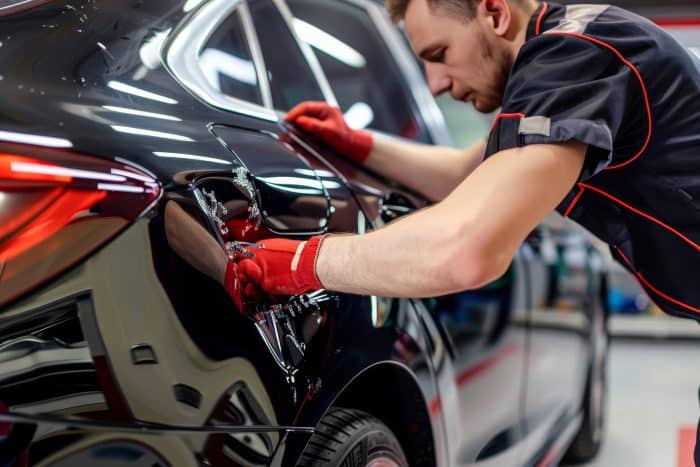
Glass Repair or Replacement:
Should your car’s windows or windshield be damaged with cracks or breaks, it is essential to have them fixed or replaced. Repairing glass is usually a fast procedure, whereas replacing it may take more time, particularly if the new glass has to be specially ordered.
Final Inspection and Quality Control:
After the repairs are finished, the vehicle is subjected to a thorough final inspection to confirm that all damages have been repaired and that it appears in pristine condition. Additionally, some repair shops might provide an extensive cleaning or polishing service to enhance the vehicle’s overall look.
How to Prepare Your Vehicle for Repair
Remove Personal Belongings:
Prior to leaving your car for repairs, please take out all personal items from inside. Be sure to check the glove compartment, trunk, and beneath the seats. Emptying your vehicle helps prevent any loss or damage to your belongings while the work is being done.
Document the Condition:
Capture images of your car from various perspectives, ensuring to include detailed shots of any damage as well as wide-angle views of the entire vehicle. This record will be valuable if any disagreements arise following the completion of repairs.
Provide Necessary Documentation:
Please have all relevant paperwork ready, including your insurance claim number, estimate, and the contact details of your insurance adjuster. This information will assist the repair shop in liaising with your insurance provider and facilitate a seamless experience.
Discuss Timeframe and Costs:
Discuss with the repair shop the expected duration for the repairs and any possible expenses you may need to cover. Gaining clarity on both the timeline and costs in advance will aid you in making appropriate plans.
Arrange Transportation:
Based on how severe the damage is, your car could be in the repair shop for a few days or possibly weeks. Make sure to organize other means of transportation during this time, such as renting a car, using rideshare services, or sharing rides with others.
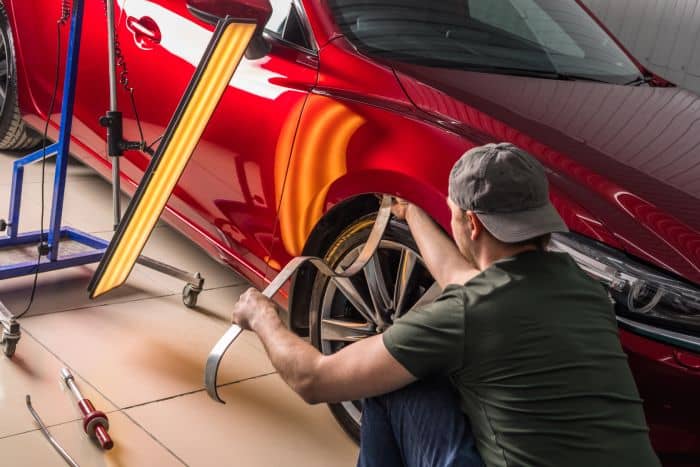
What to Expect After the Repair
Once your vehicle has undergone repairs, there are several important points to consider:
- Inspect the Repairs: Prior to leaving, take a moment to thoroughly examine the repairs. Confirm that all issues have been resolved and that the car appears to be in pristine condition. Focus on the color match of the paint, the evenness of the panels, and the overall quality of the finish.
- Check for Additional Issues: Occasionally, unforeseen problems or further damage may occur while repairs are being carried out. If you observe anything out of the ordinary, like panels that are not aligned properly or unusual sounds, make sure to inform the repair shop right away.
- Review the Warranty: If the repair shop provides a warranty, take the time to examine the terms and conditions carefully. Ensure you comprehend what is included and the duration of coverage. Store all paperwork associated with the repair and warranty securely.
Experiencing hail damage to your vehicle can be overwhelming, yet familiarizing yourself with the auto hail repair process and preparing your car can simplify things. It’s important to evaluate the extent of the damage, submit an insurance claim, select a suitable repair shop, and review the completed work—each step is vital for returning your vehicle to its original state.
By investing time in preparation and understanding what lies ahead, you can approach the hail repair journey with assurance and soon enjoy driving a car that appears brand new.

